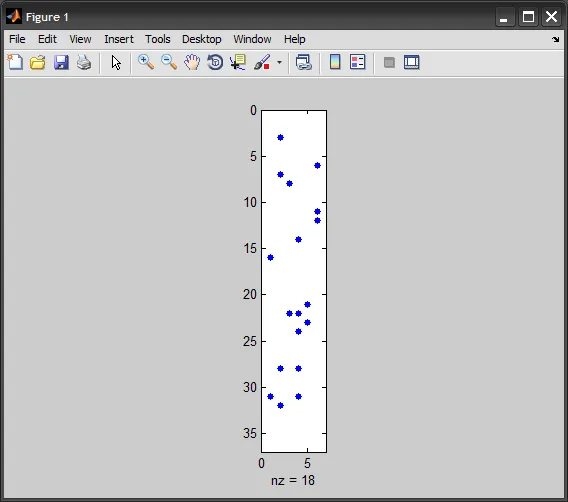一个由6个状态组成的一阶转移矩阵可以通过以下方式优雅地构建:
x = [1 6 1 6 4 4 4 3 1 2 2 3 4 5 4 5 2 6 2 6 2 6]; % the Markov chain
tm = full(sparse(x(1:end-1),x(2:end),1)) % the transition matrix.
这里是我的问题,如何优雅地构建一个二阶转移矩阵呢? 我想到的解决方案如下:
[si sj] = ndgrid(1:6);
s2 = [si(:) sj(:)]; % combinations for 2 contiguous states
tm2 = zeros([numel(si),6]); % initialize transition matrix
for i = 3:numel(x) % construct transition matrix
tm2(strmatch(num2str(x(i-2:i-1)),num2str(s2)),x(i))=...
tm2(strmatch(num2str(x(i-2:i-1)),num2str(s2)),x(i))+1;
end
有没有一行或两行的、无循环的替代方法?
--
编辑: 我尝试使用“x=round(5*rand([1,1000])+1);”比较我的解决方案和Amro的。
% ted teng's solution
Elapsed time is 2.225573 seconds.
% Amro's solution
Elapsed time is 0.042369 seconds.
有很大的不同! FYI,grp2idx 可在网上使用。

[gn,~,g] = unique([xy;bigrams], 'stable');- Amro